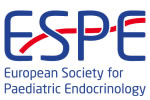hrp0095p1-592 | Thyroid | ESPE2022
Development of delayed thyrotropin elevation in small-for-gestational-age infants: Is a second screening needed?
Kang Seokjin , Yun Park So , Lee Donghyun , Sik Kim Heung
hrp0095p2-37 | Bone, Growth Plate and Mineral Metabolism | ESPE2022
A rare case of childhood hypophosphatasia presenting with fibrous dysplasia
Jeon Jaesung , Lee Jun , Young Yoon Ju , Kun Cheon Chong
hrp0095p2-106 | Fat, Metabolism and Obesity | ESPE2022
Identification of a novel point mutation in APOB gene in a patient with hypobetalipoproteinemia
Yun Park So , Sik Kim Heung , Lee Donghyun , Kang Seokjin
hrp0095p2-176 | Growth and Syndromes | ESPE2022
A case of 1q21 recurrent microdeletion syndrome with growth hormone deficiency, facial dysmorphism, and microcephaly
A Kim Hyun , Kim Jinsup , Ju Lee Hyun , Yang Aram
hrp0095p2-286 | Thyroid | ESPE2022
A Case of Sjogren's Syndrome with systemic involvement combined with exacerbated hyperthyroidism improved after glucocorticoid treatment
Lee Donghyun , Sik Kim Heung , Yun Park So , Kang Seokjin
hrp0095p2-296 | Thyroid | ESPE2022
Factors related to permanent congenital hypothyroidism
Sik Kim Heung , Yun Park So , Lee Donghyun , Kang Seokjin
hrp0092fc3.5 | Multi-system Endocrine Disorders | ESPE2019
Evaluation of Endocrine Late Effects in Survivors of Childhood Allogeneic Hematopoietic Stem Cell Transplantation in Australia – Database from 1985 to 2011
Lai-Ka Lee Samantha , Tiedemann Karin , Zacharin Margaret
hrp0092p2-241 | Pituitary, Neuroendocrinology and Puberty | ESPE2019
Effect of Gonadotropin-Releasing Hormone Agonist Treatment on Final Adult Height in Boys with Idiopathic Central Precocious Puberty
Kim Eun Young , Yi Kyung Hee , Lee Jae Hee
hrp0092p3-174 | Growth and Syndromes (to include Turner Syndrome) | ESPE2019
Population Prevalence of Down's Syndrome and Cardiac Complications in South Korea: Based on National Health Insurance Service (NHIS)
Lee Na yeong , Cho Won Kyoung , Suh Byun-Kyu



